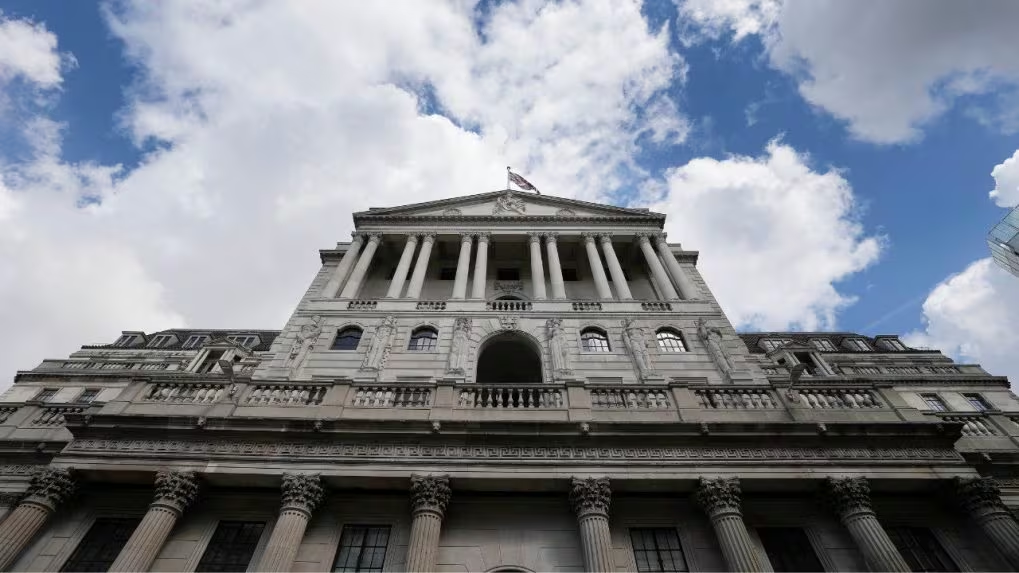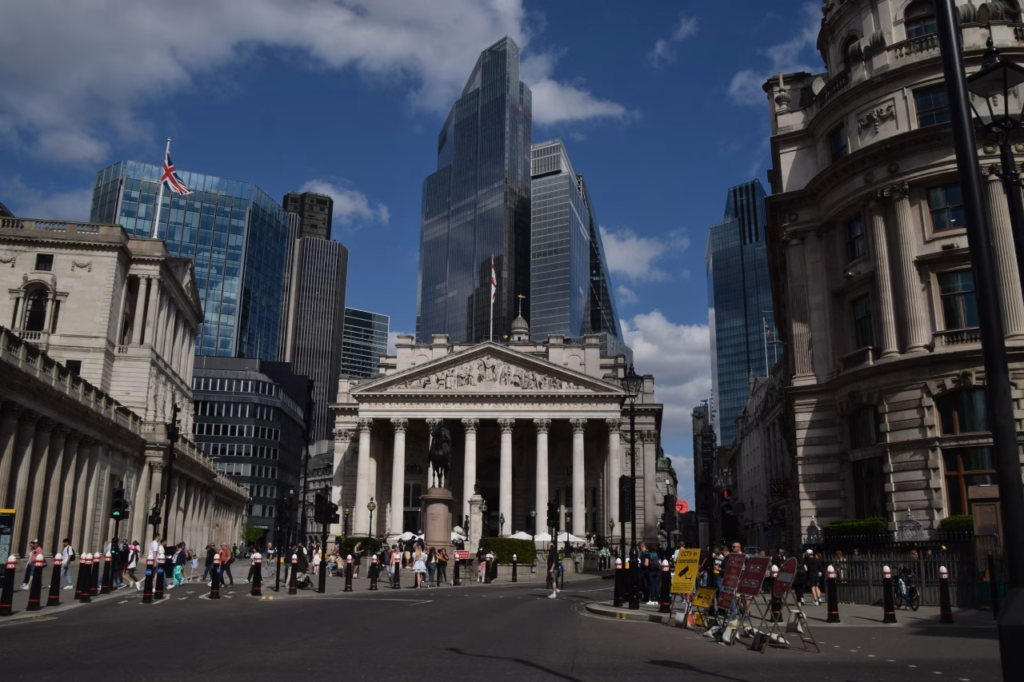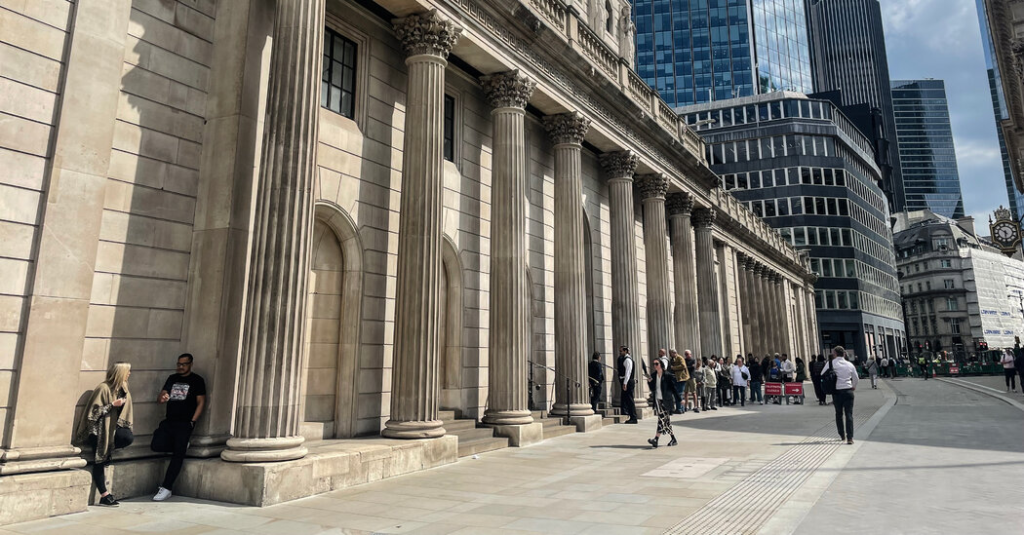In a closely watched move, the Banks of England (BoE) has decided to hold its interest rates steady, maintaining the benchmark at 5.25% for the seventh consecutive time. This decision reflects a cautious approach as the central bank continues to monitor inflation trends and economic growth.
The decision follows months of economic pressure, with the UK economy narrowly avoiding recession earlier in the year. Inflation in Britain has gradually eased, reaching 2.3% in April, but concerns remain about wage growth and global market instability.
Bank of England Governor Andrew Bailey commented that while progress on inflation is encouraging, the bank is “not yet at the point of cutting rates.” He emphasized the need for more data to ensure inflation is sustainably on track toward the 2% target.
Learn more about BoE decisions
U.S. Banks Prepare for Consumer Response and Market Shocks
While the UK central bank plays it safe, banks in the United States are growing increasingly alert to the ripple effects this could trigger across the global financial system. Although the Federal Reserve held its own rates steady in June, many analysts had expected the Bank of England to begin cutting, potentially signaling a shift in global monetary policy.

The surprise hold has prompted a wave of caution in the U.S. financial sector, with leading banks like JPMorgan Chase, Bank of America, and Citigroup closely evaluating their consumer lending and investment strategies.
According to analysts from Morgan Stanley, “The Bank of England’s hesitation to cut rates suggests that underlying inflation pressures remain globally. U.S. banks are watching consumer behavior closely—any signs of credit stress could trigger swift adjustments in lending.”
U.S. consumers are already navigating high credit card interest rates, auto loans, and student debt burdens, with some signs of growing financial strain. If banks react by tightening lending standards, it could slow economic growth further just as the country heads into a critical election season.
Consumer Confidence Wavers as Households Reassess Spending
One of the most immediate effects being felt is a shift in consumer confidence. Recent surveys from the University of Michigan show that consumer sentiment dropped in early June, with concerns over inflation, job security, and rising interest on debts.
Many households in both the UK and U.S. are reacting with more cautious spending habits, scaling back on discretionary purchases and delaying major investments like home renovations or car purchases.
Track U.S. consumer sentiment here

Retailers, banks, and credit unions are responding by adjusting their outlooks. “We’re seeing early indicators that consumers are beginning to pull back,” said a senior analyst at Wells Fargo. “That tells us the interest rate environment is beginning to have a psychological impact, not just a financial one.”
Stock Markets React Calmly, But Risk Lingers
Interestingly, global equity markets have taken the BoE’s decision in stride. The FTSE 100 saw only modest movement after the announcement, and U.S. indices like the Dow Jones and S&P 500 showed limited volatility.
However, experts warn that this calm could be temporary. If economic indicators start to worsen—especially job reports, earnings data, or inflation surprises—markets could see a sharper correction.
“With central banks like the Bank of England choosing caution over action, investors are reading that as a sign that we’re not out of the woods yet,” said a Bloomberg financial commentator. “Rate cuts aren’t coming as fast as some had hoped.”
Pressure Builds on the U.S. Federal Reserve
The BoE’s latest move also places more attention on the Federal Reserve’s next decision, expected in late July. Fed Chair Jerome Powell has repeatedly stated that the Fed needs to see more convincing data that inflation is cooling before cutting rates.
The pressure is mounting as inflation in the U.S. continues to hover around 3.3%, and wage growth remains strong, complicating the Fed’s path forward. With the UK and EU holding firm on rates, the U.S. may be left to act alone if it decides to stimulate the economy via monetary easing.

“There’s a global game of chicken happening right now,” says a macroeconomist at Barclays. “Central banks are waiting to see who will blink first. If the Fed cuts while others hold, it could weaken the dollar and shift capital flows dramatically.”
Follow the Fed’s policy updates
What Comes Next for Banks and Borrowers?
For banks on both sides of the Atlantic, the current environment demands vigilant risk management. Credit defaults remain low but are rising slightly, and consumer behaviors are becoming more unpredictable.
Borrowers, meanwhile, face a tricky landscape. High interest rates are making debt more expensive, mortgages less accessible, and credit conditions tighter. Experts advise consumers to reassess their budgets, avoid taking on new high-interest debt, and look for fixed-rate options where possible.
“We may not be in a crisis, but we’re in a delicate phase,” said a financial strategist from Goldman Sachs. “Small moves by banks or central banks can have outsized effects on consumer behavior.”
Conclusion: A Delicate Balancing Act
The Bank of England’s decision to hold rates steady is a signal to global markets that the fight against inflation is not yet over. For U.S. banks, this increases the pressure to navigate a fine line between protecting profit margins and managing consumer stress.
In this tense economic climate, every rate decision, policy comment, and consumer trend will be scrutinized. Whether the U.S. economy can remain resilient or begin to falter will depend largely on how banks, households, and policymakers react in the weeks ahead.
Also Read – CEO Confidence Hits 5-Year Low as Layoffs Loom





